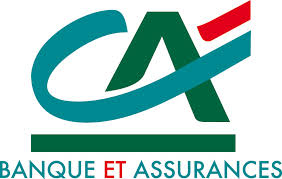The 21st century also opened the investing world to newcomers and unconventional investors by saturating the market with discount online investment companies and free-trading apps, such as Robinhood. The Amsterdam Stock Exchange was established in 1602, and the New York Stock Exchange (NYSE) in 1792. DIY investing is sometimes called self-directed investing, and requires a fair amount of education, skill, time commitment, and the ability to control one’s emotions. If these attributes do not describe you well, it may be smarter to let a professional help manage your investments. In addition to regular income, such as a dividend or interest, price appreciation is an important component of return. Total return from an investment can thus be regarded as the sum of income and capital appreciation.
Would you prefer to work with a financial professional remotely or in-person?
Cash flow from investing (CFI) activities comprises all the cash purchases and disposals of non-current assets that produce benefits for the company in the long run. So far, we’ve outlined the common line items in the cash from investing activities section. You can choose the do-it-yourself route, selecting investments based on your investing style, or enlist the help of an investment professional, such as an advisor or broker. Before investing, it’s important to determine your preferences and risk tolerance.
Investing activities in accounting refers to the purchase and sale of long-term assets and other business investments, within a specific reporting period. A business’s reported investing activities give insights into the total investment gains and losses it experienced during a defined period. Investing activities are a crucial component of a company’s cash flow statement, which reports the cash that’s earned and spent over a certain period of time.
In short, you add up all the cash inflow from the sale of non-current assets and any money received from the sale of marketable securities. Then you subtract the costs of purchasing non-current assets such as equipment or securities. CFI includes a whole range of investing activities that involve the cash purchases and disposals (selling) of non-current assets.
Reading the Cash Flow Statement
As shown in Vincent’s example, companies with negative cash flow from investing generally mean they’re in a growth state. The cash flow from investing activities section reports how much money has been spent (or generated) from various investment activities. Cash flow from investing activities typically refers to the cash generated in a company by making or selling investments and/or earning from investments. The two main activities that fall in the investing section are long-term assets and investments. Long-term assets usually consist of fixed assets like vehicles, buildings, and machinery. When a company purchases a new vehicle with cash, the cash outflows are listed in the investing section.
Understanding Investing
The core premise of investing is the expectation of a positive return in the form of income or price appreciation with statistical significance. Investing also differs from speculation, as evidenced by the investor’s timeframe. Speculators are typically looking to gain from short-term price fluctuations that occur in weeks, days, or even minutes.
Like all key cash flow metrics, it gives you the net amount of cash generated (or lost) in a specific period of time, aka the accounting period. Wise long-term investments will boost your cash flows from operations and ultimately boost your company’s financial health. For more information on how to increase your cash flow, please check out our article on common cash flow problems for small businesses.
All of our content is based on objective analysis, and the opinions are our own. It’s also important to point out that the purchase of PP&E (CapEx) has been fairly proportional to depreciation, which indicates the company is consistently reinvesting to keep its assets in good shape. Investing is the act of distributing resources into something to generate income or gain profits. The type of investment you choose might likely depend on what you seek to gain and how sensitive you are to risk. With little to no human interference, robo-advisors offer a cost-effective way of investing with services similar to what a human investment advisor provides. With advancements in technology, robo-advisors are capable of more than selecting investments.
What is your risk tolerance?
Options contracts are a popular derivative that gives the buyer the right but not the obligation to buy or sell a security at a fixed price within a specific period. Derivatives usually employ leverage, making them a high-risk, high-reward proposition. Real Estate Investment Trusts (REITs) are one of the most popular in this category. REITs invest in commercial or residential properties and pay regular distributions to their investors from the rental income received from these properties. REITs trade on stock exchanges and thus offer their investors the advantage of instant liquidity.
Our team of reviewers are established professionals with decades of experience in areas of personal finance and hold many advanced degrees and certifications. At Finance Strategists, we partner with financial experts to ensure the accuracy of our financial content.
What are Investing Activities?
Mutual funds and ETFs can either passively track indices, such as the S&P 500 or the Dow Jones Industrial Average, or can be actively managed by fund managers. While the universe of investments is vast, here are the most common types of investments. This is because when you save money by depositing in a bank, the bank then lends that money to individuals or companies that want to borrow that money to put it to good use. Explore the Cash Conversion Cycle in what is investment activities 2024, understanding its significance, components, and impact on business liquidity. Stay ahead by delving into the latest insights on optimizing the CCC to enhance cash flow management.
- Stay ahead by delving into the latest insights on optimizing the CCC to enhance cash flow management.
- It can indicate that significant amounts of cash have been invested in the long-term health of the company, such as research and development.
- Similarly, the statement of cash flow portrays the company’s net cash flow for a certain financial period.
- To calculate the cash flow from investing activities, the sum of these items would be added together, to arrive at the annual figure of -$33 billion.
Similarly, the statement of cash flow portrays the company’s net cash flow for a certain financial period. Get instant access to video lessons taught by experienced investment bankers. Learn financial statement modeling, DCF, M&A, LBO, Comps and Excel shortcuts. The subsequent section is the CFI section, in which the cash impact from the purchase of non-current assets such as fixed assets (e.g. property, plant & equipment, or “PP&E) is calculated. Investors who prefer professional money management generally have wealth managers looking after their investments. Wealth managers usually charge their clients a percentage of assets under management (AUM) as their fees.
On the other hand, if your operating activities were causing this negative cash flow, there would be a real cause for concern. For information pertaining to the registration status of 11 Financial, please contact the state securities regulators for those states in which 11 Financial maintains a registration filing. Cash flow from financing activities includes cash transactions that increase or decrease a company’s equity and/or liabilities. It’s important to keep in mind that investing activities do not include any dividends paid, debts acquired, equity financing, and interest earned or paid. This section also mentions any cash spent on purchases of stocks in other companies from which dividends are earned. Cash Flow from Investing Activities accounts for purchases of long-term assets, namely capital expenditures (Capex) — as well as business acquisitions or divestitures.
The articles and research support materials available on this site are educational and are not intended to be investment or tax advice. All such information is provided solely for convenience purposes only and all users thereof should be guided accordingly. If your employer offers a retirement plan, such as a 401(k), allocate small amounts from your pay until you can increase your investment. If your employer participates in matching, you may realize that your investment has doubled. Bonds are debt obligations of entities, such as governments, municipalities, and corporations. Buying a bond implies that you hold a share of an entity’s debt and are entitled to receive periodic interest payments and the return of the bond’s face value when it matures.










